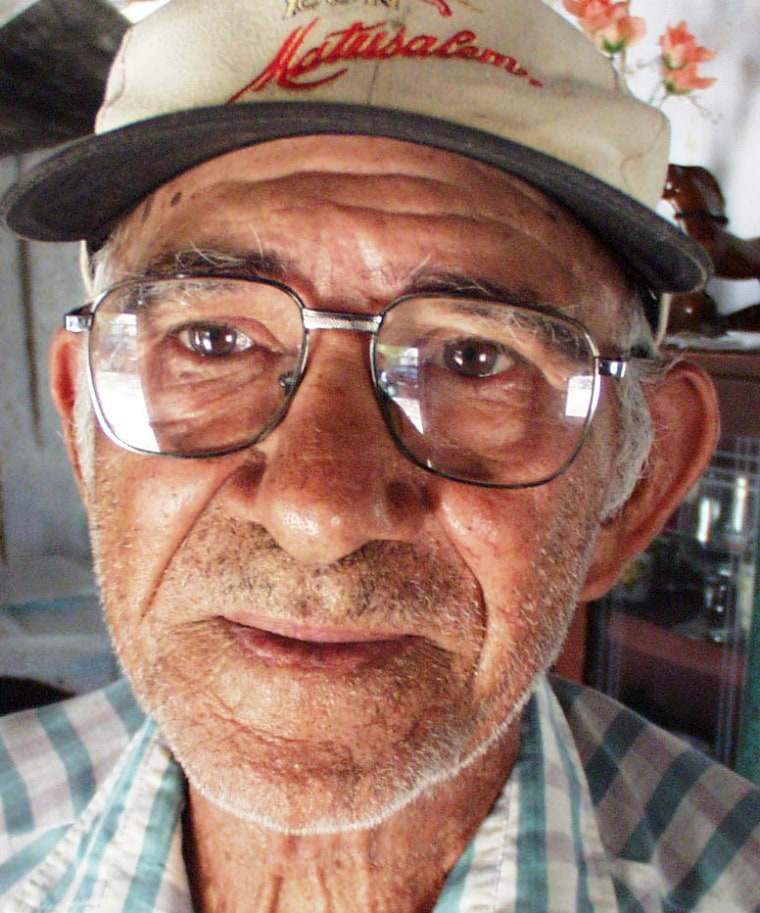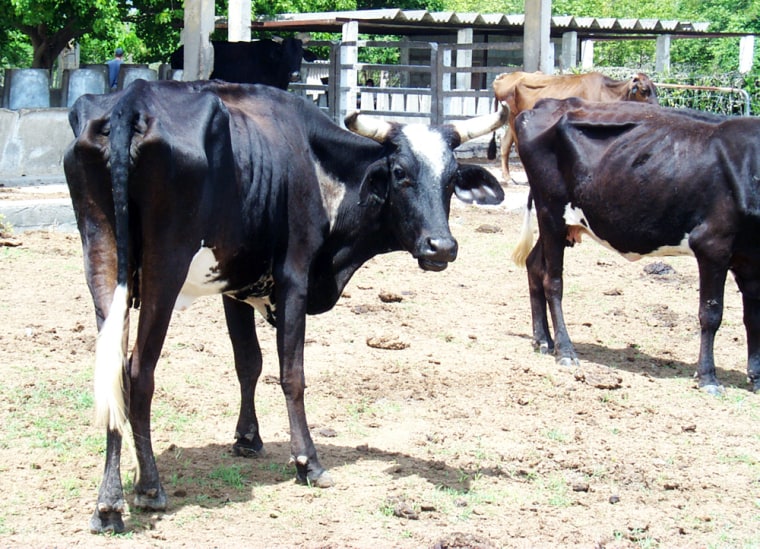Miguel Baez, 77, has farmed the land here his whole life, but Cuba’s rural heartland is no longer what he remembers.
The fields were so fertile, he boasted, they could grow enough sugar to sweeten every cup of coffee in the world. There was enough crops and cattle to make a man rich and a nation fat.
Now, after a 15-year drought, the land looks like the handiwork of arson — as if someone took a torch and set fire to all the pastures and meadows in sight.
Driving along the Central Highway, just 20 minutes outside the provincial capital of Holgiun, the devastation is inescapable.
The air is as dry as the acres of sunburnt sugar stalks snapping in the wind. Shriveled cattle pick through a few brittle weeds poking through the rocks. Bridges rise over dried streams and rivers of stones.
Cuba’s Civil Defense has placed the entire zone under a state of alert, which means some government relief. Caravans of trucks bring water every day for both the people and the livestock.
Drought has spared humans, cattle haven’t been so lucky
Ninety head of cattle are dying a day, robbing the area of much of its dairy.

“The cows once gave milk. Now, all they give is misery,” Baez said.
Since January, the drought consumed close to 4,000 acres of Holguin’s best grazing land, forcing farmers to sacrifice for food more than 13,200 cattle too weak to stay alive. They scramble to save the survivors.
Legna Ravelo, 28, is the chief veterinarian for the Jose Merceron UBPC, the largest dairy farm in the town of Calixto Garcia. She hasn’t seen any real rain in nine months so her cattle are dying at almost triple the natural rate.
“Most starve to death. Others die from infectious diseases or an ailment caused from stress related to hunger.”
Ravelo spends most of her time in the Recuperation Center, a special corral where she tends to the animals with the best chance of survival.
Helping few cattle along — American feed
In the corner of a wooden shed sit 18 sacks of a product called Norgold, imported from the Midwest Grain Company. Ravelo carefully measures about two cups of feed per animal, complaining that money is tight.
“It’s a food supplement that works — doubling milk production; offsetting the drought… My problem is that I don’t have enough to feed every animal on the ranch. I would love to give them more.”
It’s all a juggling act.
Once a week, the cooperative travels to the next province to buy local feed derived from rice since the drought ruined their sugar crops. Fuel costs have more than tripled. That means fewer antibiotics, fewer vitamins, fewer of everything.
By now, these farmers were expecting some relief. The rainy season got under way last month but only a quarter of the average fell. Not enough to soak the land or refill empty basins.
The Guirabo reservoir that holds 15 million cubic meters of water and fed this farm has been bone dry for the past eight months.
And the drought has spread east, now covering almost half of Cuba’s land while touching the lives of a third of its 11 million inhabitants.
Everyone feels the food shortages
Luis Manuel Nunez, a father of twin toddlers, spends Saturday morning searching for sweet potatoes, the key ingredient here in homemade baby food. He finally gave up after striking out at five different farmer’s markets.
Holguin alone lost 5,000 acres of land used to harvest many of the island’s vital basic foods. So far 30,000 tons of food, worth 26 million pesos, along with about 350,000 gallons of milk, 25 percent of the stock, have been ruined. For the four drought-stricken provinces, 119 million pesos have been lost in food production since January.
The drought also eroded the sugar harvest, once the king of the Cuban economy. Holguin lost more than half of its output. More of the same is predicted for next year.
Miguel Baez has lived through three droughts. “This is the worst."
Like many in Holguin, he prays for relief in any form, including a hurricane — normally considered a scourge in the Caribbean.
1998 was the last year the basins were full, after Hurricane George swept across the island.
